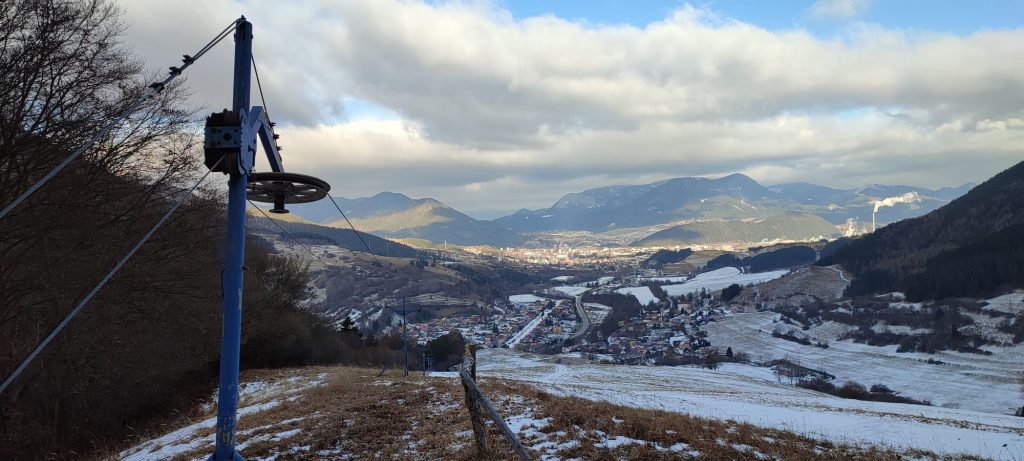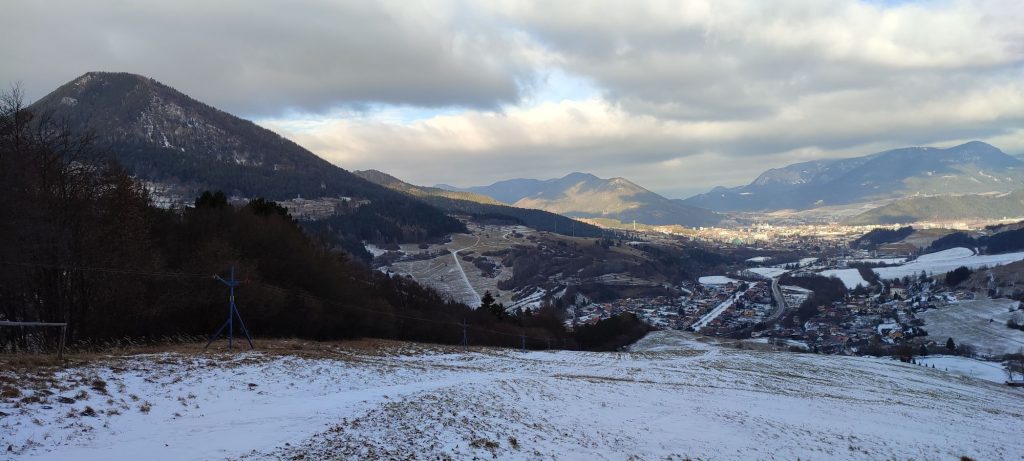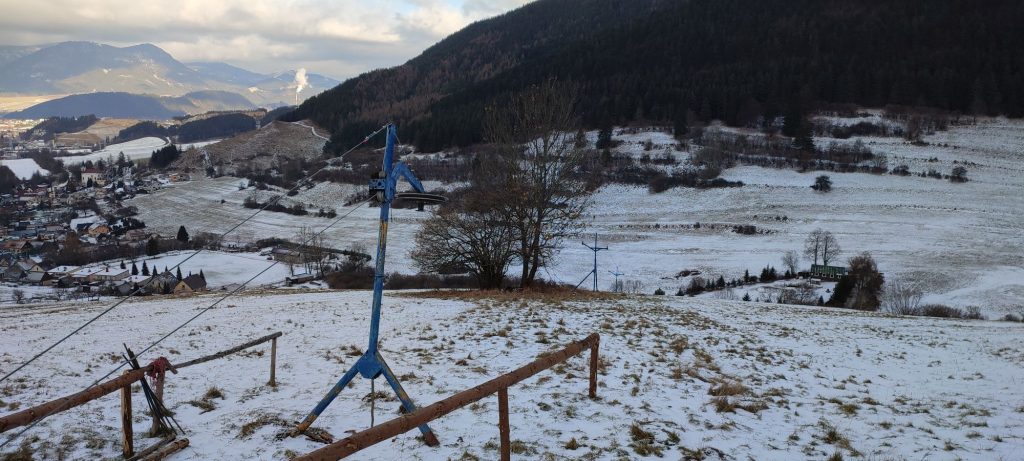Nature as Therapy: Ski Tows in Biely Potok
In the cold December weather, fresh air and physical exercise are more important than during the rest of the year. In winter, we spend long evenings at home at a TV, a computer, with our mobile phone, books or games. With this type of activities, we usually reach for different sweets and snacks. Such indulging would not be that much of a problem, if we did not lack exercise in winter, as well as fresh air and sunshine, which supplies important vitamin D. There is a wise saying: “Where there is no sun, there is a doctor.” That is why, in winter, we should make use of every ray of sunshine which warms the complexion on our face or the skin on our hands.
On the Saturday morning, we were surprised by the sunshine, which, according to the weather forecast, was only expected briefly around noon. We reviewed the map in our minds and as it was too late in the day for a longer trip, we decided to stay in Ružomberok. After checking the bus schedule, we found the easiest option was to get to Biely Potok, from where we also found a good connecting ride back. A bus of the Ružomberok public transport system brought us to bus stop “Pri moste“, which is also a bus stop of the suburban bus system, called “Ružomberok,Biely Potok,pri moste“. We looked around and from the three options we had planned, we chose the trip to the ski tows, from where you get a lovely view. Now let’s move on to the description of our trip.
From the bus stop, we head towards the intersection by the bridge over the Revúca river. To cross the main road, we use the marked crossing, which will safely guide us to the other side. At the intersection on the other side of the crossing, there is a hiking signpost called “Biely Potok“, running from which are two routes. We will follow the green-marked one in the direction to notch Brdisko. Behind the signpost, there is a station on a tree, at which we can make a stop before the trip or on the way back. The green hiking trail marks lead us mildly uphill to the nearest intersection, where we leave the trail and we continue to the right, along “Pod Ostré“ Street. On the facade of a house situated by the intersection, we may notice a statue of a saint with a child. In the past, a lot of houses had statues of saints on their facades, but over time, the statues disappeared, and later on, during reconstructions, the alcoves for the statues disappeared from houses as well. We continue up the street to the nearest intersection, near which there is an electricity transformer. From the intersection, we continue in between the houses along a field road running towards meadows above the houses. The path in between the houses was covered with remnants of hard snow and ice, which were slippery. After passing by the houses, it is better to walk on the grass area next to the road, where it is not slippery. The views of the surroundings, in particular in the direction to the north, are revealed right after passing by the houses. We will, however, wait for a bit nicer views and we continue along the road, which leads us mildly uphill, to the beginning of a ski tow. From the ski tow, we walk back a few dozen metres mildly downhill along the periphery of the woods. Here, we get a lovely view of Biely Potok, Ružomberok, and behind it, we can see the Choč Mountains with dominant peak Great Choč, which was, unfortunately, covered by a cloud. In the distance above Ružomberok, we can see the dominant Likava Castle, which is open for visitors during summer months. After soaking up the views and having some hot tea on the bench by the ski tow booth, we continue uphill along the ski tow. There are ten numbered posts between the beginning and the end of the ski tow, so we can divide our ascent into several sections, to avoid getting sweaty. One of the main rules of physical exercise in cold weather is to move our bodies in such way that we get warm, but not sweaty, because we could easily catch a cold that way. At the end of the ski tow, we walk a few metres to the left, and the trees will reveal the peak of Sidorovo in our view. The views are similar to the previous viewpoint, but the higher altitude gives the view of Ružomberok and its surroundings a different perspective. Our ascent ends here and now we need to decide how to continue. In the event of slippery terrain, we recommend returning along the same route. Otherwise, you can descend slightly to the right towards the bushes, where you will see a hunters’ hide. From the hunters’ hide, we continue directly in the direction to Ružomberok, where we will find another, shorter, ski tow. From the ski tow, we can continue to the left, to the path on which we came, or we can walk down a bit steeper slope along the ski tow, to get to the area for the skiers. From the ski tow, we walk down to Biely Potok, and the street we enter is the same one from which we turned to the road between the houses.
In order to be able to explore our surroundings in accordance with the idea of #ObjavUdržateľnéSlovensko (DiscoverSustainableSlovakia), we also need to take care of ourselves and always choose suitable clothing for our trips. On winter trips, we must not forget a cap, a scarf, mittens, hot tea, or a spare set of clothing. In order to avoid slipping, use suitable footwear. It is also useful to get something to help you on slippery terrain, you can find plenty of such tools in stores, just choose whichever suits you best. A hiking pole, a ski pole, or just a wooden stick in your hand can assist you, especially on downhill terrain. On our trips, we always think about the nature and the environment around us, to help maintain everything as it is. We act mindfully, we do not snap off anything and do not leave behind anything we brought with us. Cores and skins from apples, bananas, tangerines or oranges, consumption of which is a part of winter season, do not belong in nature, and if we find any, we should take them with us.
We are going to make one more trip this year, which we will present to you in the holiday period.
The text was prepared by Milan Kolčák and Ján Benčík from the Ružomberok Information Centre.
This is the fourteenth article of the article series with subtitle Nature as Therapy.
Published: 23.12.2021











